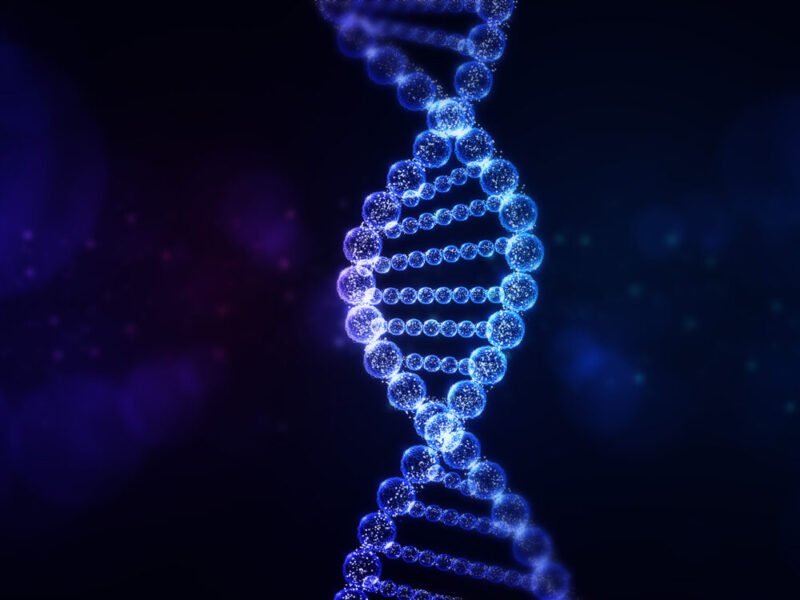Image by Freepik
| English Name | Lesch-Nyhan Syndrome |
|---|---|
| Also Known As | Hypoxanthine Guanine Phosphoribosyltransferase Deficiency, HPRT Deficiency, Kelly-Siegmiller Syndrome (in cases of partial deficiency) |
| How Common | Affects 1 in 100,000 boys |
| Trials Abroad | Info on tests happening in other places |
| Inheritance | Passed down in families (mostly boys) |
| Starts At | Shows up from when you’re a baby |
| Who Gets It | Mostly seen in boys |
| Main Signs | Learning issues, high uric acid, odd movements, self-harm, etc. |
| Causative Gene | HPRT1 gene |
| What Helps | Treating the symptoms, like managing uric acid |
Table of Contents
Lesch-Nyhan syndrome is a genetic and metabolic disorder that affects children from birth and causes serious neurological disorders, cognitive alterations and various behavioral problems.
This article addresses this syndrome, its symptoms, how it is diagnosed and the main treatments available.
What kind of disease?
Genetic mutations cause defects in enzymes involved in purine recycling , resulting in symptoms such as hyperuricemia, mental retardation, self-harm, involuntary movements, muscle stiffness, and kidney stones. People with this syndrome often face challenges in walking and may require assistance or a wheelchair.
Purines are substances that make up nucleic acids (DNA, RNA) that are involved in genetic information, and when they are metabolized, uric acid is produced. In easy way if I give example Purines are like building blocks for our genetic information, found in DNA and RNA. When our body breaks down these genetic materials, it produces a substance called uric acid. Think of it as recycling – there’s an enzyme called hypoxanthine guanine phosphoribosyltransferase (HPRT) that plays a key role in recycling these purines.
Now, in Lesch-Nyhan syndrome, there’s a hiccup. Mutations in the HPRT1 gene lead to a shortage of the HPRT enzyme. Imagine this enzyme as a recycling superhero. Without enough of it, the purines don’t get recycled properly. Instead of being reused, they start piling up, along with their byproduct, uric acid. It’s like a recycling plant that’s not functioning properly, causing a buildup of materials that can lead to issues in the body such as mental retardation, involuntary movements, muscle stiffness, kidney stones, and self-harm.
Even though we can’t cure Lesch-Nyhan Syndrome, we can still do a lot to make life better for people dealing with it. We call it supportive care and management strategies. It’s like having a plan to handle things and improve how someone feels.
In this article, we’re going to talk about why Lesch-Nyhan Syndrome happens, what signs to look for, and ways we can make life easier for those with the condition. Let’s dive into understanding, spotting, and managing Lesch-Nyhan Syndrome to make things a bit better for everyone affected.
What is Lesch-Nyhan syndrome?
Lesch-Nyhan syndrome is a hereditary disease, described in 1964, that affects the metabolism of purines (nitrogen compounds that form , along with other nucleotides such as pyrimidines, nucleic acids such as DNA and RNA), and whose cause is a mutation of a gene located on the X chromosome, of recessive inheritance (which means that both genes must be abnormal to cause the disorder). Lesch-Nyhan Syndrome, also called Lesch-Nyhan Disease, is a rare and serious genetic issue that mostly affects males .
It happens because there’s not enough of a helpful enzyme called hypoxanthine-guanine phosphoribosyltransferase (HPRT). This shortage causes uric acid to build up in the body. People with this syndrome might show self-harming behaviors, have issues with their nerves, and face developmental challenges.
This condition comes from changes in the HPRT1 gene on the X chromosome. Sadly, there’s no cure, but we manage the symptoms using medications, therapy, and behavioral help. It’s important to get support from a team of healthcare pros and caregivers who can understand and handle the various needs that come with Lesch-Nyhan Syndrome. Scientists are working hard to learn more and find better ways to help with this rare genetic disorder.
What gene is the cause?
The HPRT1 gene, located at Xq26.2-q26.3 on the X chromosome, has been found to be the causative gene for Lesch-Nyhan syndrome. The HPRT1 gene is the blueprint for HPRT, an enzyme involved in purine recycling. It is known that mutations in this gene result in a deficiency or complete deficiency of HPRT, which causes high levels of uric acid to accumulate in the body, leading to the development of Lesch-Nyhan syndrome.
Lesch-Nyhan syndrome is inherited in a manner called X-linked recessive (recessive) inheritance. Humans have two chromosomes called sex chromosomes. There are two types of sex chromosomes: X chromosomes and Y chromosomes; the XY combination is male, and the XX combination is female. The HPRT1 gene is a gene located on the X chromosome.
Men who have an abnormality in the HPRT1 gene develop the disease, but women do not develop the disease even if they have an abnormality in the HPRT1 gene, which is present on one of their two X chromosomes, because the other one complements the function. (Thus, a person who has a genetic abnormality but does not develop the disease is called a “carrier.”) Because it is rare for a woman to have a mutation in the HPRT1 gene on both X chromosomes, Lesch-Nyhan syndrome mostly occurs in men.
Boys inherit one X chromosome from their mother, and girls inherit one X chromosome from each parent. Therefore, if the father has Lesch-Nyhan syndrome, the child will not develop the disease if he is male, but if he is female, he will always be a carrier. Also, boys born to mothers who are carriers of the disease have a 1 in 2 chance of developing the disease, and girls have a 1 in 2 chance of being a carrier.
Signs and Symptoms:
Lesch-Nyhan syndrome is characterized by three main symptoms: neurological problems, cognitive disorders and overproduction of uric acid. The signs of Lesch-Nyhan syndrome typically appear when a child is as young as six months old. It’s noteworthy that female carriers usually don’t show these symptoms.
As I said, the main effect of Lesch-Nyhan syndrome is related to the increase of uric acid in the body, which will create all kinds of health problems. Here are the most important signs of the condition:
- swelling of the joints, similar to the symptoms of gout;
- kidney or bladder stones ;
- poor development of the locomotor system;
- poor muscle control;
- moderate intellectual disabilities;
- self-mutilation, behavior that generally occurs after the child is two years old and is manifested by biting and gnawing of fingers and lips.
It is also common for patients to suffer from dysarthria (difficulty articulating sounds), dysphagia (alterations when swallowing food) and type problems. muscular, such as opisthotonos. Spasticity, hyperreflexia or the Babinski sign (the dorsal extension of the big toe, accompanied by the fanning out of the rest of the toes) usually appear late.
The psychological signs of Lesch-Nyhan syndrome cannot yet be explained by specialists, nor is there any treatment for them.
Lesch-Nyhan syndrome diagnosis:
To diagnose this condition, doctors use a three-step approach: looking at how the person behaves, doing some chemical tests, and checking their genes.
- Diagnostic Method : If someone has trouble thinking (mental retardation) and shows strange movements (chorea athetosis) or hurts themselves on purpose (self-injurious behavior), doctors might suspect this disease. Babies with this condition often have eating problems and don’t grow well. As they get older, they have trouble developing their motor skills. Weird movements start around age 1, and hurting themselves on purpose starts after age 2.
- Biochemical Diagnosis : In babies during their first month, high levels of uric acid in the blood and a higher ratio of uric acid to creatinine in urine may suggest that the body is making too much uric acid. This can even lead to kidney stones. To confirm this, doctors check for lower activity of HPRT in red blood cells. Also, there’s more PRPP, which makes APRT more stable and active. If HPRT is low and APRT is high, it indicates a problem.
- Genetic Diagnosis : To find out if someone has Lesch-Nyhan syndrome, doctors check their genes. They look at a gene called HRT1, which contains instructions for making the HPRT enzyme. This is done by reading the gene directly through a method called sequencing.
In Lesch-Nyhan syndrome, the activity of HPRT is very low, less than 1.5%. When doctors see this, it confirms that the person has Lesch-Nyhan syndrome.
What kind of treatment is given?
There is no radical treatment. Treatment for hyperuricemia includes drinking enough fluids and administering urine alkalizers. Allopurinol, a xanthine dehydrogenase inhibitor, is also effective. Dealing with Lesch-Nyhan syndrome means tackling a variety of challenges, and there isn’t a one-size-fits-all solution. Since the symptoms can show up in different ways for different people, the approach to treatment is all about managing each symptom individually. This involves teamwork between various specialists and caregivers.
The care plan may include a mix of strategies:
- Physical Therapy: This helps with movement and getting around, often involving collaboration with orthopedists.
- Behavioral Therapies: These focus on addressing self-mutilating behaviors, aiming to find ways to manage and reduce them.
- Medications: While there’s no magic fix, some drugs can be useful. For instance:
- Allopurinol: Helps control excessive uric acid levels, a common issue in Lesch-Nyhan syndrome. However, it doesn’t directly tackle neurological or physical symptoms.
- Extracorporeal Shock Wave Lithotripsy (ESWL): This therapy targets kidney stones, using shock waves to break them down.
- Benzodiazepine/Diazepam: Prescribed to manage spasticity and related anxiety.
- Baclofen: A drug that helps with spasticity and some behavioral symptoms.
- Restraints and Mouth Guards: In some cases, physical implements like restraints on the hips, chest, and elbows may be used in children to prevent self-mutilating behaviors. Mouth guards can also be used to prevent bite injuries.
It’s important to note that while there’s no perfect cure for Lesch-Nyhan syndrome, these treatments aim to improve the overall quality of life by managing specific challenges that individuals may face.
In Conclusion :
In conclusion, Lesch-Nyhan syndrome presents a complex set of challenges for affected individuals and their families. While there is currently no cure, ongoing research and a multidisciplinary approach offer hope for improved management and support. By understanding the genetic basis, symptoms, and available resources, we can work towards a more compassionate and informed perspective on Lesch-Nyhan syndrome.



